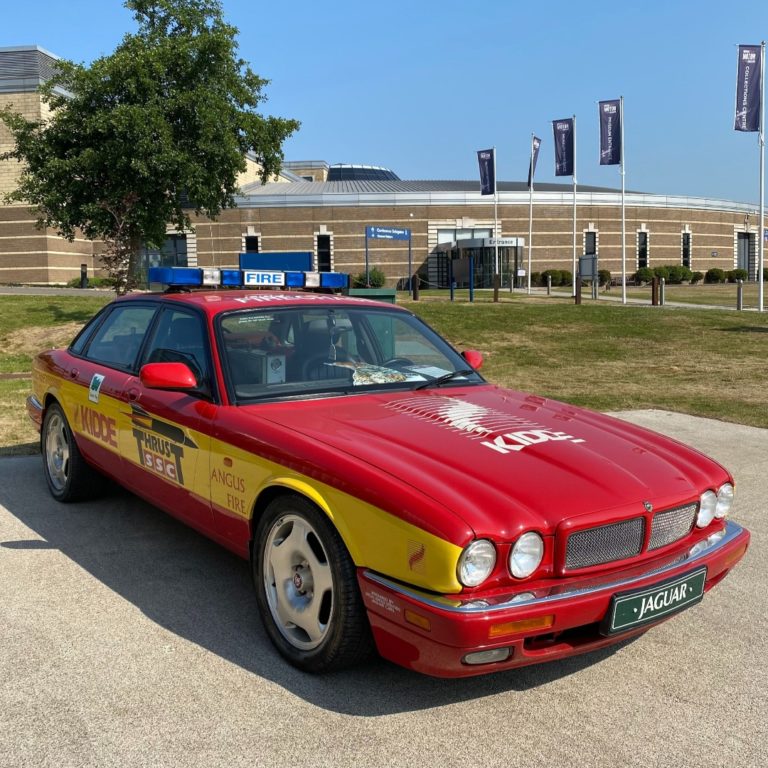
1994 Jaguar XJR – Thrust SSC Fire Support Car
This very early supercharged XJR was one of the pre-production cars, built in December 1993, and modified in 1994. It was only the sixteenth X300 model to be built according to its VIN (chassis number). It was lent by Jaguar to Richard Noble, to serve as a support vehicle and fire tender for his attempt with the Thrust SSC car to set the first World Land Speed Record at more than the speed of sound. On 15 October 1997, Thrust SSC driven by Andy Green duly captured the record at 763 mph (1,228 km/h).
The new X300 range was launched in September 1994 as a worthwhile replacement for the eight-year old XJ40 range, and was extensively re-designed compared with its predecessor. The styling was much improved, with every external body panel of the XJ40 being replaced by softer, more sculpted shapes, which were unmistakably Jaguar. The front end featured a contemporary re-interpretation of the classic Jaguar grille and quad headlamp layout.
As originally launched, there were 3.2 litre and 4 litre versions of the XJ6, featuring the AJ16 engine, an improved version of the original AJ6 engine. For the first time, there was a supercharged engine in the exciting XJR model. There was also still an XJ12 model with Jaguar’s famous 6 litre V12. The corresponding Daimler range consisted of two models, the 4 litre engined Six and the V12 engined Double Six. However, after three years, in 1997 both the six and twelve cylinder models were replaced by the XJ8, featuring Jaguar’s new AJ-V8 engine of 3.2 litres or 4 litres.
The most affordable model, the XJ6 3.2-litre, cost £28,950 at launch, while the Daimler Double Six cost £59,950. The fastest models in the range were the supercharged XJR and the V12 cars, all capable of 155 mph (250 km/h). Just over 92,000 of the X300 models were made over the production period of three years. The Jaguar XJ6 4 litre models were the best-sellers.
Chassis Number: SAJJPXLF4SS720016
Owner: The Jaguar Daimler Heritage Trust
Inventory Number: 110/J.63